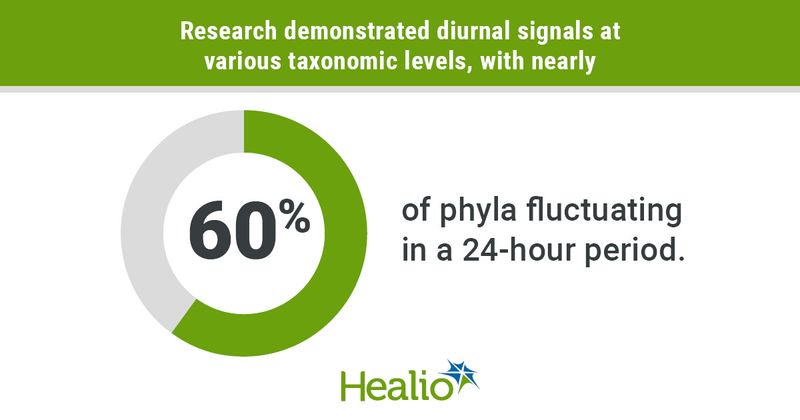Nearly 60% of phyla in gut fluctuate from morning to night, by season
The balance of microbes in the human gut varies from day to night and by season, with the most pronounced microbiome fluctuations reported from summer to winter.
“The microbiome accounts for about half of the cells that make you a human, and the fluctuations in the makeup of the microbiome could have wide-ranging implications for health and medicine,” Amir Zarrinpar, MD, PhD, assistant professor of medicine at the University of California, San Diego, said during the Digestive Disease Week media briefing. “Our gut microbiome, though, is constantly changing, is very dynamic.

“My team and I set out to learn more about how the fluctuations in the gut microbiome throughout the day and across seasons could play a role in health and disease.”
Using data from the global American Gut Project, Zarrinpar and colleagues identified 19,335 adult stool samples and analyzed collection time, date and location. They reported diurnal signals present at various taxonomic levels, with distinct 24-hour cycling in nearly 60% of phyla.
A notable example was Actinobacteriota, which researchers identified at lower levels in stool samples taken in the morning compared with samples taken later in the day. Although Zarrinpar and colleagues have not determined the cause of these daily fluctuations, they hypothesize that diet and sleep are major contributors.
Seasonal changes were “even more pronounced,” Zarrinpar noted, with certain types of bacteria following one of two distinct patterns over the course of the year. For example, researchers identified lower levels of Proteobacteria in the winter with levels rising steadily during spring and peaking in the summer. Research is ongoing, but Zarrinpar explained that data suggest latitude, climate, humidity and environmental factors could play a role.
“These findings offer important insights into the role of the changing gut microbiome in health and disease,” Zarrinpar concluded. “They can potentially explain why we are predisposed to seasonal diseases and whether the microbiome primes us for that. Not only that, it can influence how researchers study the microbiome and how our research could be affected by these variations in the microbiome.”

